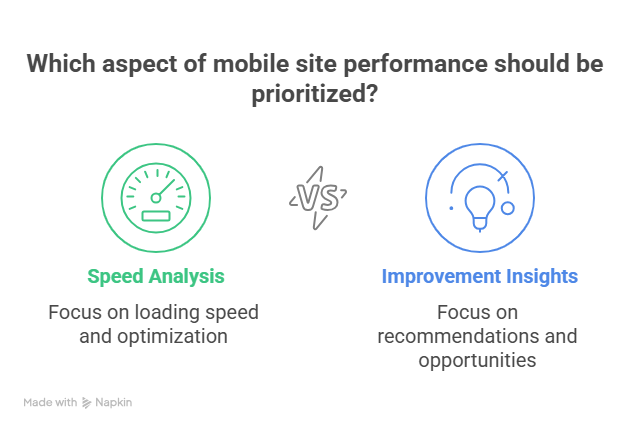With over 60% of internet users accessing websites through mobile devices, having a mobile-friendly website is crucial for search engine rankings and visibility.
A recent study found that websites with poor mobile optimization are losing significant traffic and potential customers. To stay ahead of the competition, it’s essential to test and optimize your website’s mobile SEO.
Using the right mobile seo testing tools and mobile optimization tools can help you identify areas for improvement and boost your website’s rankings. In this article, we’ll explore the importance of mobile SEO testing and provide guidance on how to optimize your website for better rankings.
Why Mobile SEO Matters in 2023
The significance of mobile SEO has grown exponentially, making it a vital component of any successful digital marketing strategy in 2023. As search engines continue to evolve, the way we optimize our websites must also adapt to meet the changing demands of mobile users.
Mobile-First Indexing and Its Impact
Google’s shift to mobile-first indexing means that the search engine now prioritizes the mobile version of a website when it comes to indexing and ranking. This change underscores the importance of having a mobile-friendly website that provides a seamless user experience across various devices.
Ensuring that your website is optimized for mobile is crucial for maintaining or improving its search engine rankings. A mobile-friendly website not only enhances user experience but also contributes to better search engine visibility.
Key Mobile SEO Ranking Factors
Several key factors influence mobile SEO rankings, including page speed, core web vitals, and mobile-friendly design elements. Understanding and optimizing these factors can significantly improve your website’s performance in search engine results.
Page Speed and Core Web Vitals
Page speed is a critical ranking factor, as it directly affects user experience and search engine crawlability. Core Web Vitals, including metrics like Largest Contentful Paint (LCP), First Input Delay (FID), and Cumulative Layout Shift (CLS), provide insights into a website’s performance and usability.
To improve page speed, consider leveraging website performance testing tools to identify areas for optimization. Ensuring that your website loads quickly and efficiently is vital for retaining users and improving search engine rankings.
Mobile-Friendly Design Elements
A mobile-friendly design is essential for providing a positive user experience. Key elements include responsive design, easy-to-click buttons, and readable content. Utilizing mobile-friendly website tools can help you assess and improve your website’s mobile usability.
By incorporating these design elements and regularly testing your website with mobile seo checker tools, you can ensure that your website remains competitive in the ever-evolving digital landscape.
Top Mobile SEO Testing Tools
Mobile SEO testing tools are essential for identifying and fixing issues that can impact a website’s search engine rankings. With the majority of users accessing websites through mobile devices, ensuring a smooth mobile experience is crucial.

Google’s Mobile-Friendly Test
Google’s Mobile-Friendly Test is a valuable tool for determining if a website is optimized for mobile devices. This tool analyzes the website’s design and functionality on mobile devices and provides recommendations for improvement.
- Checks if the website is mobile-friendly
- Provides suggestions for improvement
- Helps in identifying mobile usability issues
PageSpeed Insights for Performance Analysis
PageSpeed Insights is another critical tool for analyzing a website’s performance on mobile devices. It evaluates the site’s loading speed and provides insights into how to improve it.
Key features include:
- Analyzing site speed on mobile devices
- Providing recommendations for speed improvement
- Highlighting opportunities for optimization

Mobile Usability Report in Search Console
The Mobile Usability Report in Google Search Console helps webmasters identify and fix mobile usability issues. It provides detailed reports on problems such as viewport configuration, font sizes, and tap targets.
Benefits of the Mobile Usability Report include:
- Identifying mobile usability errors
- Improving user experience on mobile devices
- Enhancing overall mobile SEO
By utilizing these top mobile SEO testing tools, businesses can ensure their websites are optimized for mobile devices, improving user experience and search engine rankings.
How to Conduct a Comprehensive Mobile SEO Audit
To improve your website’s visibility on mobile devices, it’s essential to perform a comprehensive mobile SEO audit. This process involves several key steps that help identify and fix issues affecting your site’s mobile search rankings.
Analyzing Mobile Site Speed
Mobile site speed is a critical factor in user experience and search engine rankings. A slow-loading website can lead to high bounce rates and lower rankings. To analyze your site’s speed, you can use tools like Google’s PageSpeed Insights, which provides detailed reports on your site’s performance on mobile devices.
Key metrics to focus on include:
- First Contentful Paint (FCP)
- Speed Index
- Total Blocking Time
- Largest Contentful Paint
Testing Responsive Design Across Devices
Ensuring your website has a responsive design is crucial for providing a good user experience across various devices. You can test your site’s responsiveness using tools like Google’s Mobile-Friendly Test or by manually checking your site on different devices.
Key aspects to check include:
- Layout adaptability
- Content readability
- Interactive element usability
Fixing Common Mobile SEO Issues
Common issues that can affect your site’s mobile SEO include render-blocking resources and unoptimized images. Addressing these issues can significantly improve your site’s performance and user experience.
Eliminating Render-Blocking Resources
Render-blocking resources can delay the loading of your webpage. To eliminate them, you can:
- Minify CSS and JavaScript files
- Defer loading of non-critical CSS and JavaScript
- Inline critical CSS
Optimizing Images for Mobile
Optimizing images is crucial for reducing page load times on mobile devices. Techniques include:
- Compressing images using tools like TinyPNG
- Using responsive images with the srcset attribute
- Lazy loading images
| Optimization Technique | Description | Impact on Mobile SEO |
|---|---|---|
| Minifying CSS and JavaScript | Reducing file size by removing unnecessary characters | Improves page load times |
| Image Compression | Reducing image file size while maintaining quality | Reduces page load times and improves user experience |
| Lazy Loading | Loading images only when they come into view | Improves initial page load times and reduces bandwidth usage |
Conclusion
By now, it’s clear that mobile SEO is crucial for achieving better search engine rankings. Utilizing mobile seo testing tools is a vital step in this process, enabling you to identify and fix issues that may be hindering your website’s performance on mobile devices.
As you’ve learned, testing your website’s mobile SEO involves analyzing site speed, testing responsive design, and fixing common issues. By implementing these strategies, you can significantly enhance your website’s user experience, drive more traffic, and ultimately boost conversions.
Regularly testing and optimizing your website for mobile SEO using the right tools will help you stay ahead of the competition and adapt to the ever-evolving digital landscape. Start optimizing your website today and reap the benefits of a mobile-friendly online presence.
FAQ
What is mobile SEO, and why is it important?
Mobile SEO refers to the process of optimizing a website for better search engine rankings on mobile devices. It’s crucial because the majority of internet users access websites through mobile devices, and Google prioritizes mobile-friendly websites in its search results.
How do I test my website’s mobile SEO?
You can test your website’s mobile SEO using tools like Google’s Mobile-Friendly Test, PageSpeed Insights, and the Mobile Usability Report in Search Console. These tools help identify issues and provide recommendations for improvement.
What are the key factors that affect mobile SEO rankings?
Key factors that affect mobile SEO rankings include page speed, core web vitals, mobile-friendly design elements, and responsive design. Ensuring that your website excels in these areas can improve its search engine rankings.
How can I improve my website’s page speed for mobile SEO?
To improve your website’s page speed, you can eliminate render-blocking resources, optimize images for mobile, and leverage browser caching. Tools like PageSpeed Insights can provide specific recommendations for your website.
What is mobile-first indexing, and how does it impact my website?
Mobile-first indexing means that Google prioritizes the mobile version of your website when it comes to indexing and ranking. Ensuring that your website is optimized for mobile is crucial for maintaining or improving its search engine rankings.
How often should I conduct a mobile SEO audit?
It’s a good practice to conduct a mobile SEO audit regularly, ideally every few months, to ensure that your website remains optimized for mobile devices and to identify any new issues that may have arisen.
Can I use mobile SEO testing tools for other types of SEO audits?
While mobile SEO testing tools are designed specifically for mobile SEO, some tools, like PageSpeed Insights, can also provide insights into other aspects of SEO, such as page speed and performance.

